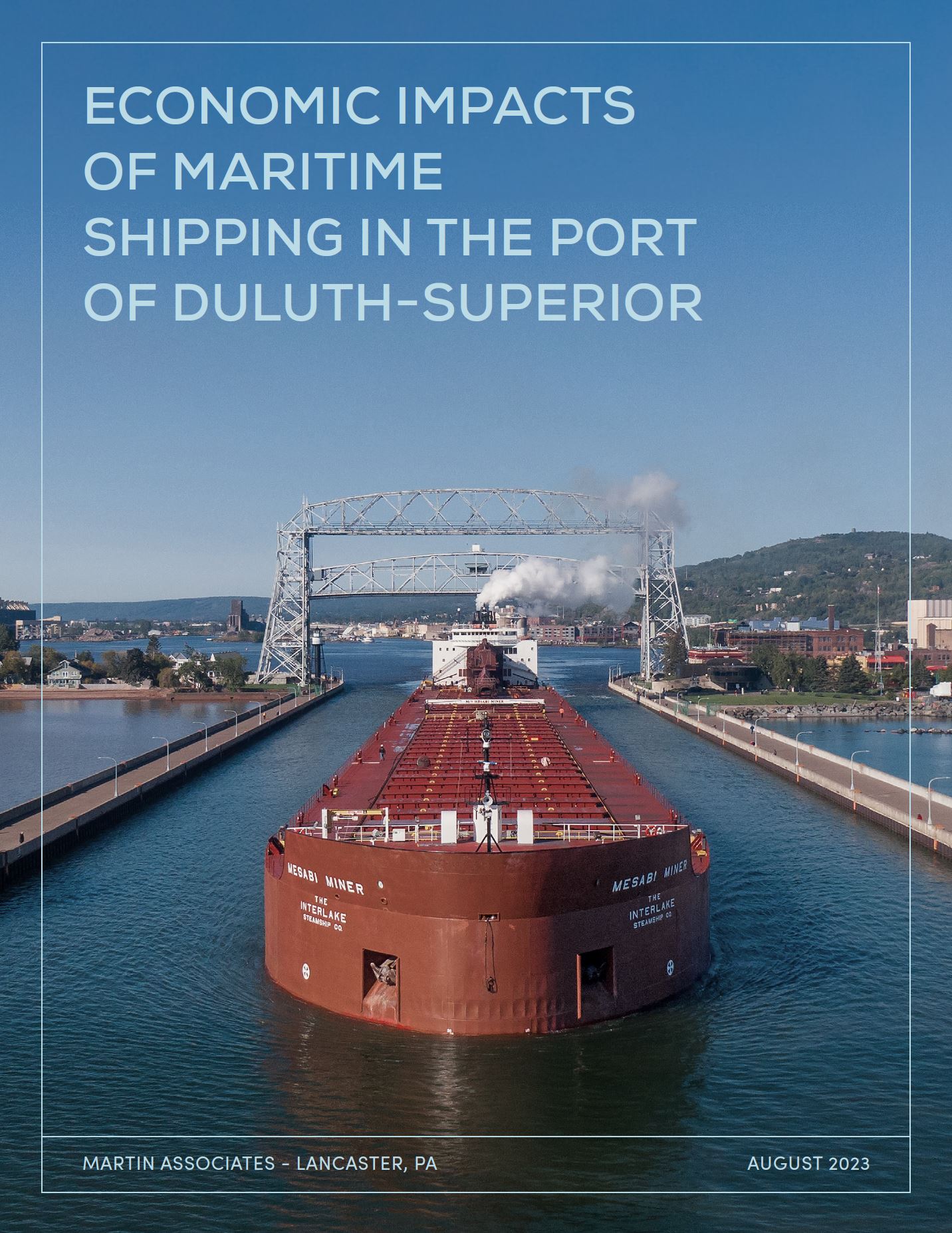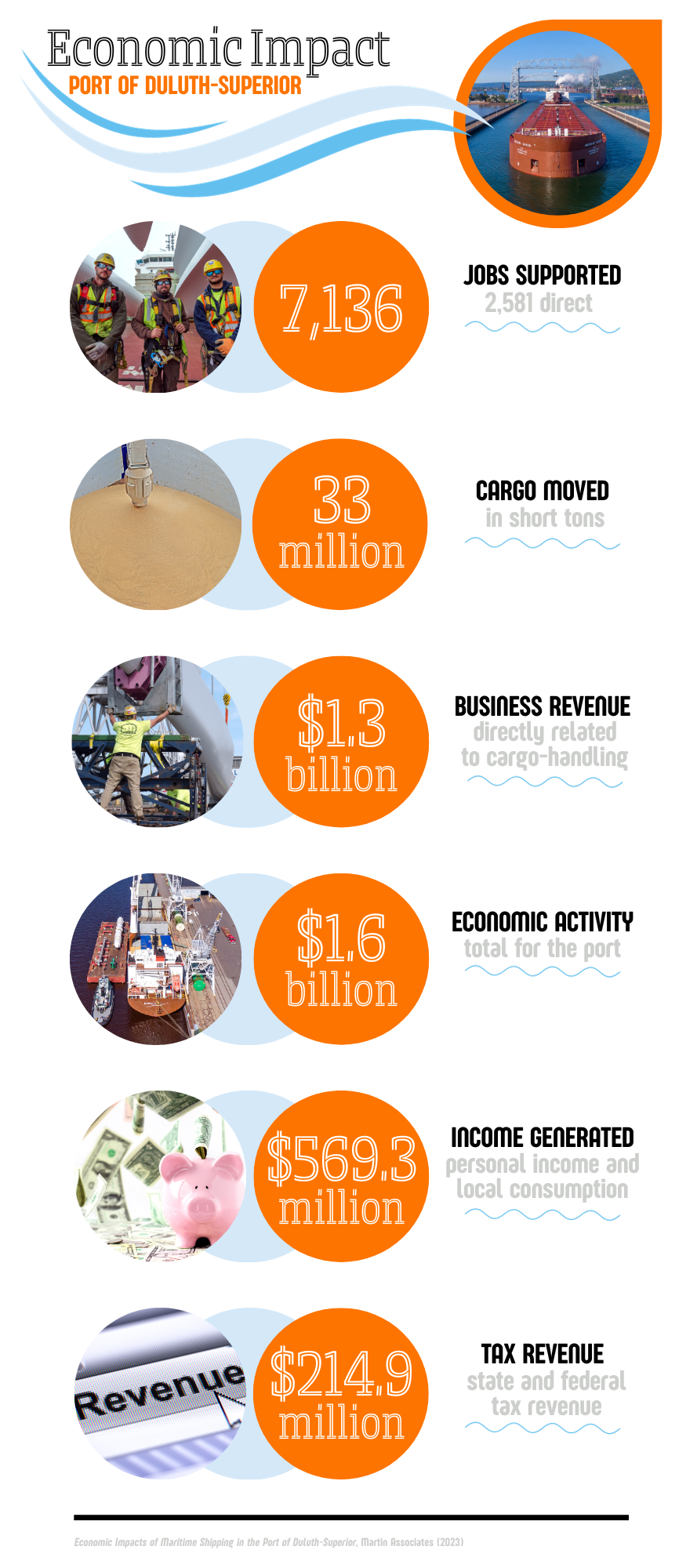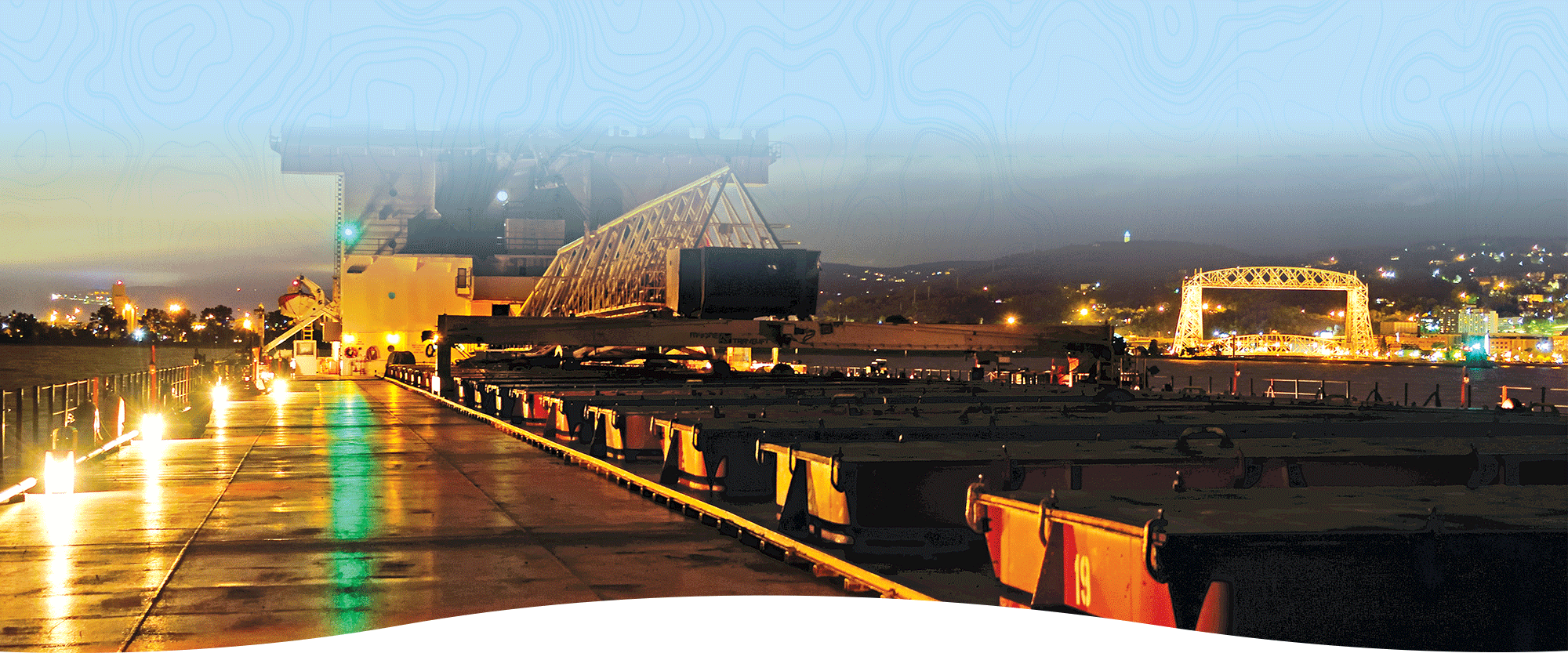Shipping supports a vibrant economy.
Transportation is strategically vital to economic development. Waterborne transportation is the safest, most fuel efficient, cost-effective and environmentally responsible mode of moving goods in our global economy. Maritime’s inherent efficiencies are critical to the success of supply chain managers worldwide. The Great Lakes-St. Lawrence Seaway not only saves users billions of dollars in transportation costs each year, it also relieves pressure on the nation’s congested roads and rail lines.
Shared by two cities and two states, the Port of Duluth-Superior has been the backbone of this region’s economy for well over a century.
Economic Impact Studies

Port of Duluth-Superior Economic Impacts
This 2023 study assesses contributions made by commercial maritime shipping at the Port of Duluth-Superior.

Great Lakes-St. Lawrence Region Economic Impact Study Full Report
Review the full report and results from the 2023 Great Lakes-St. Lawrence Region Economic Impact Study.

Port of Duluth-Superior Economic Impact (2023)

Foundations for Growth – Industrial Study
Analyzing the role of industry in Duluth as it relates to generating economic growth and opportunity in the city, this ongoing study helps inform future economic development planning and actions. The original study occurred in 2018, with an update also published in 2019. The most recent update occurred in 2024, analyzing data from 2022.


